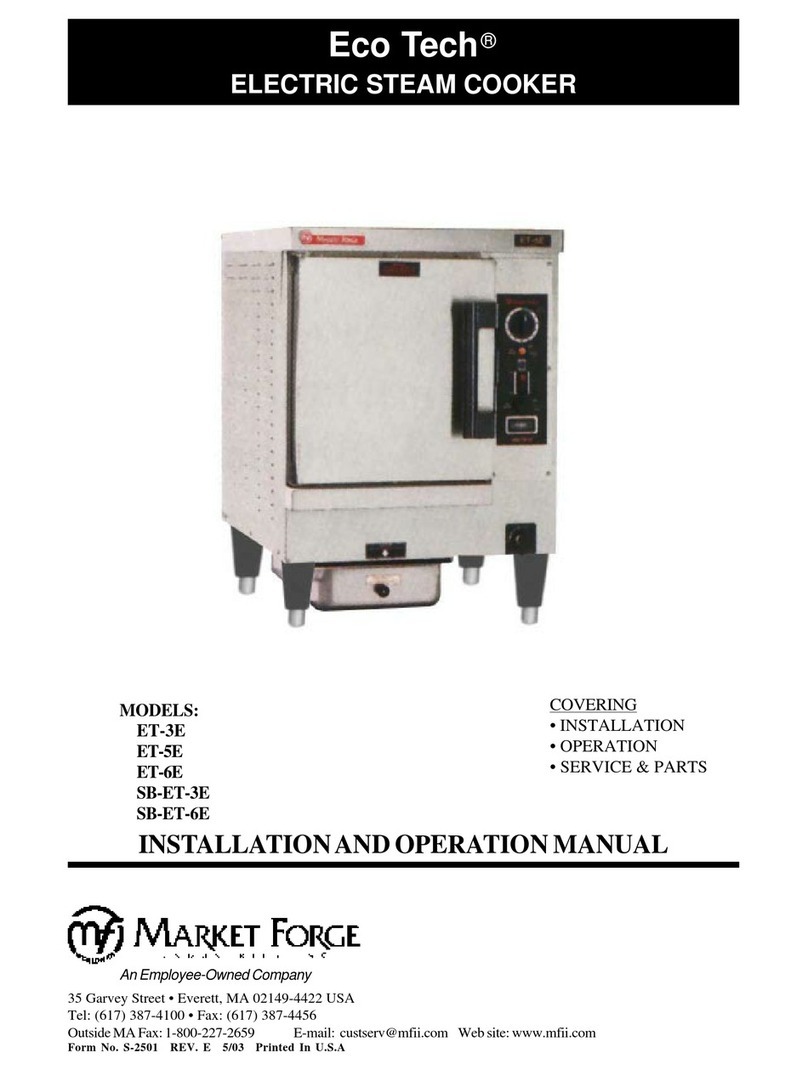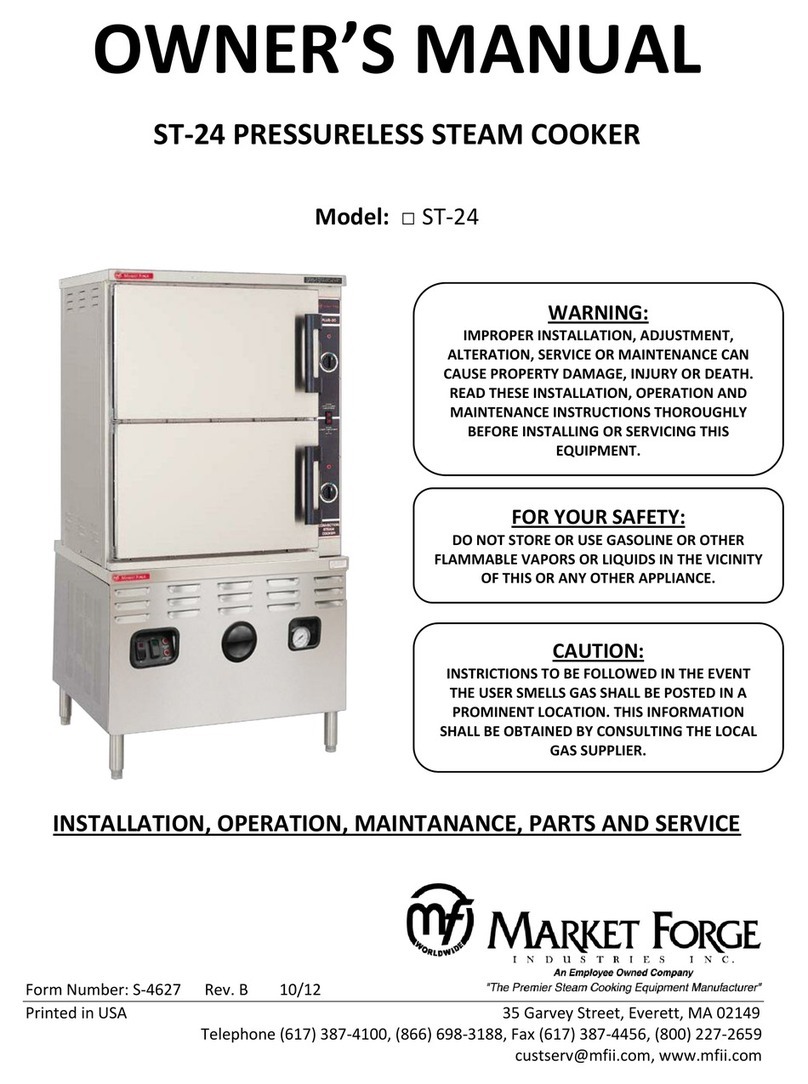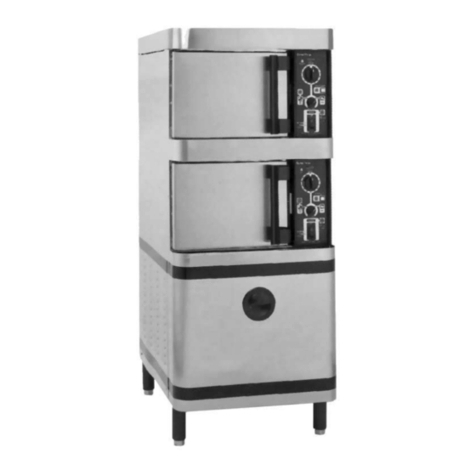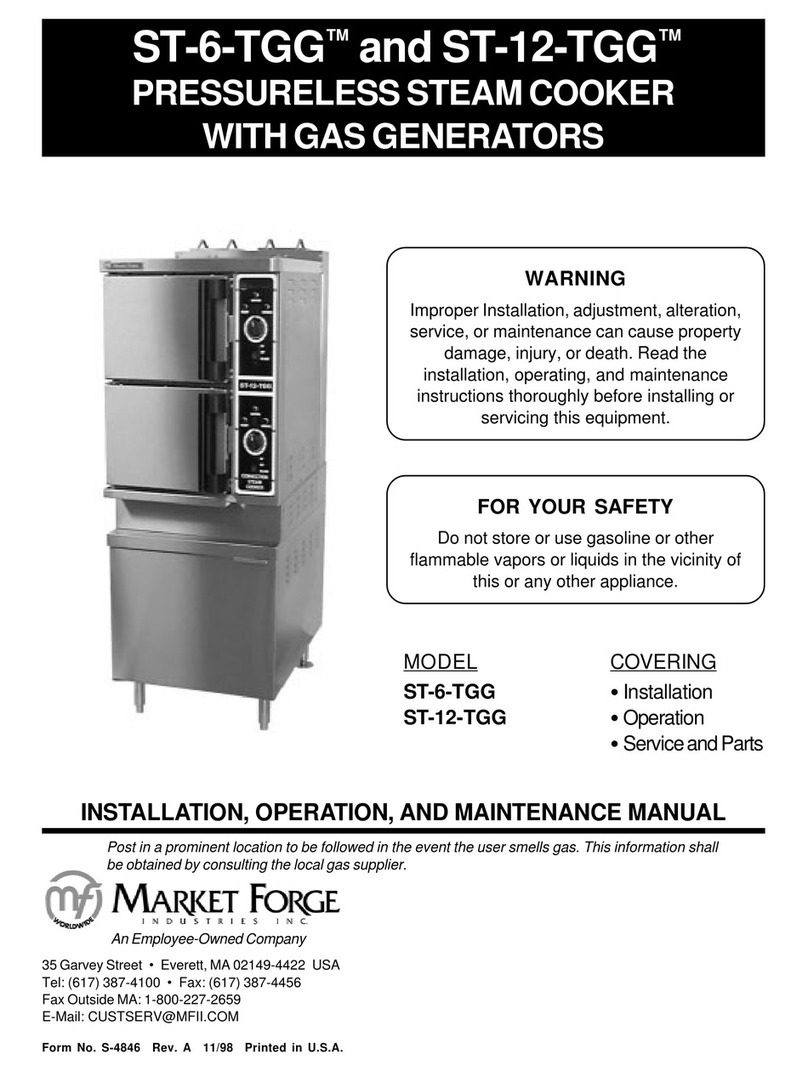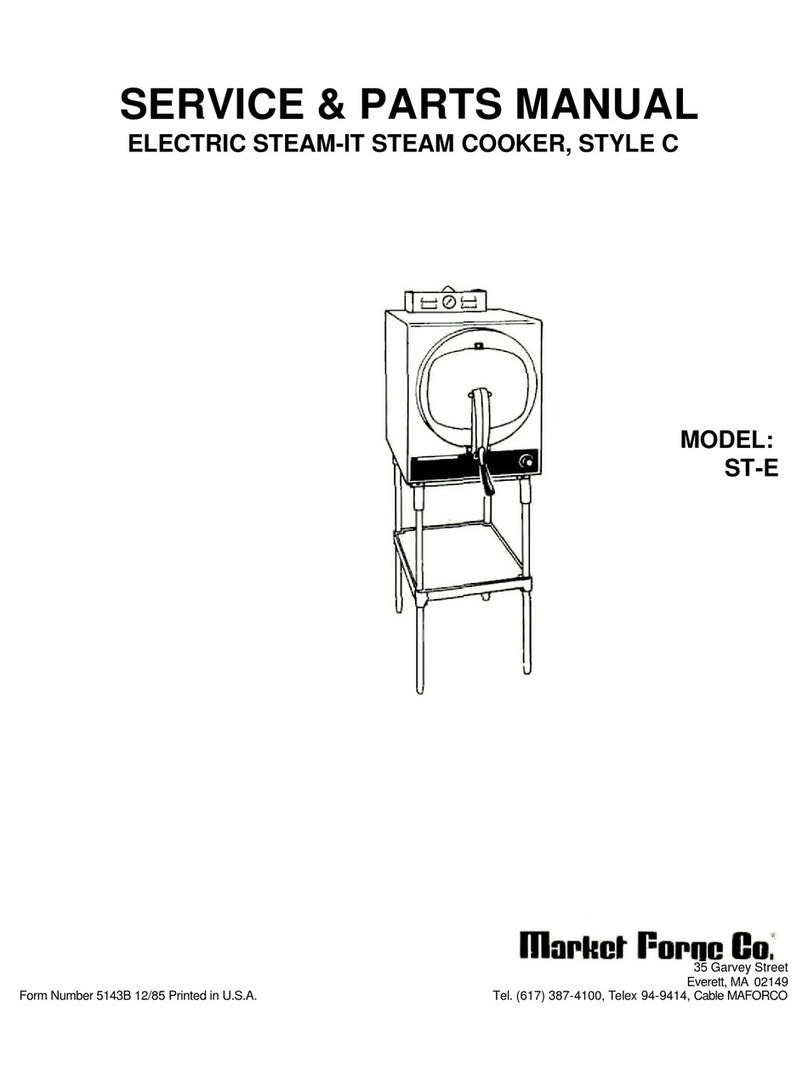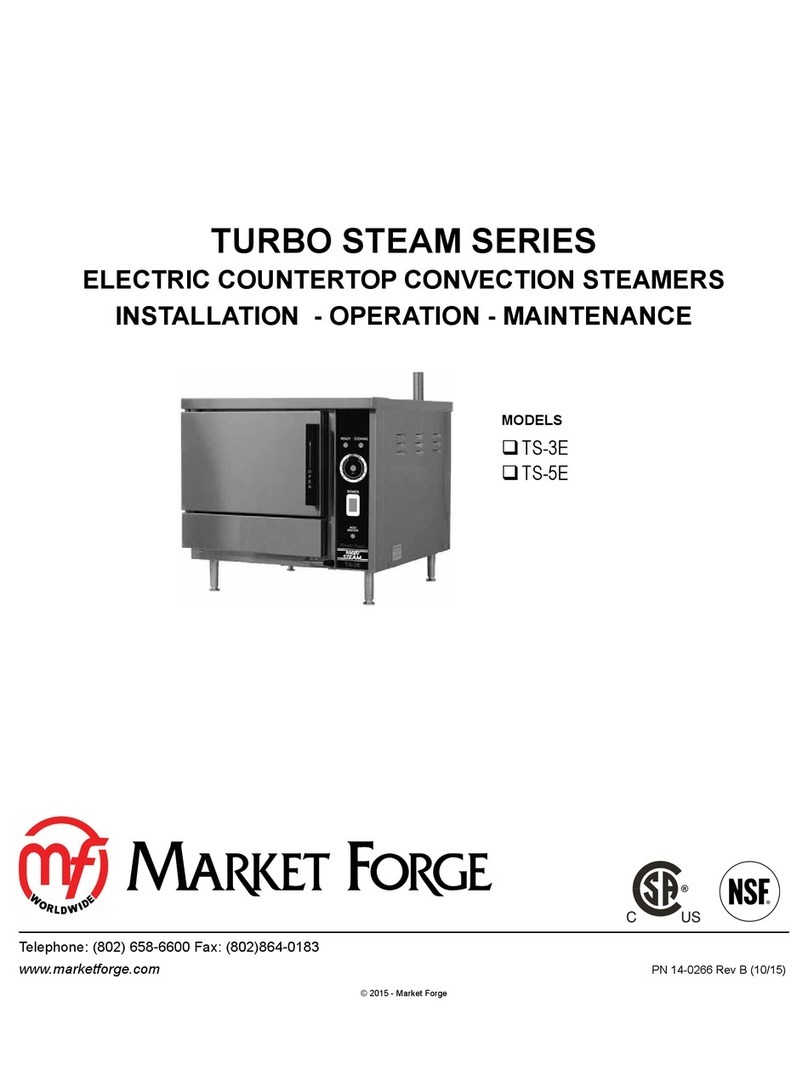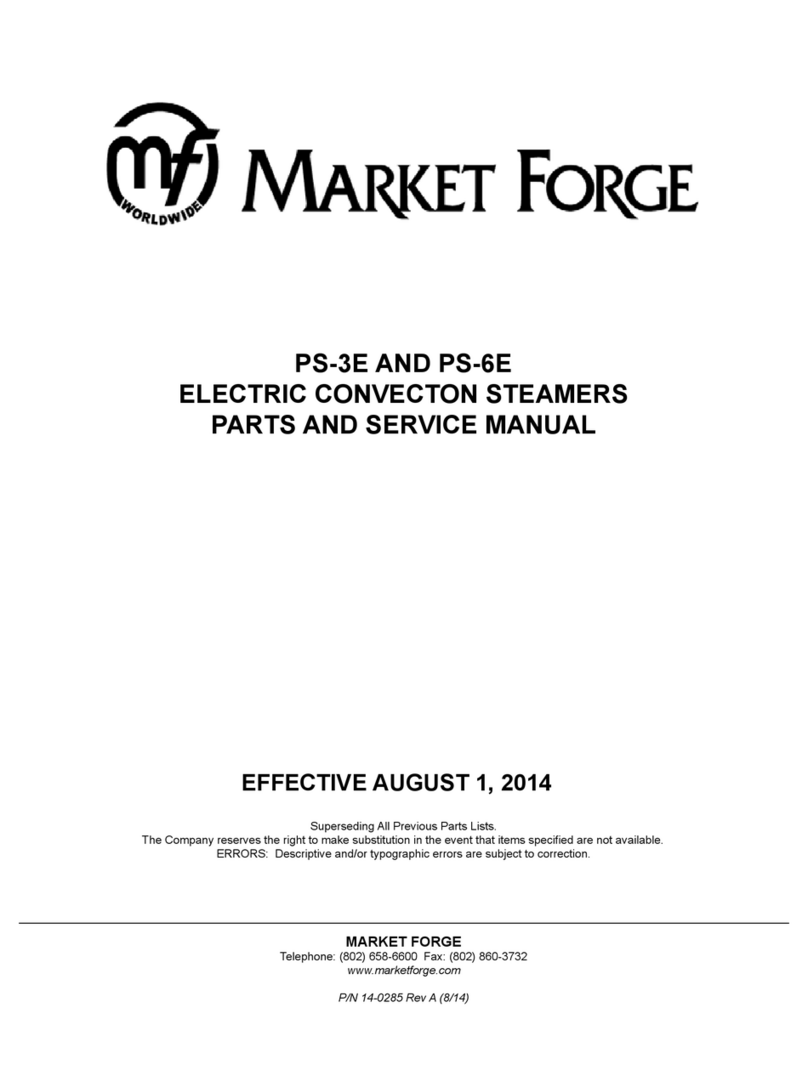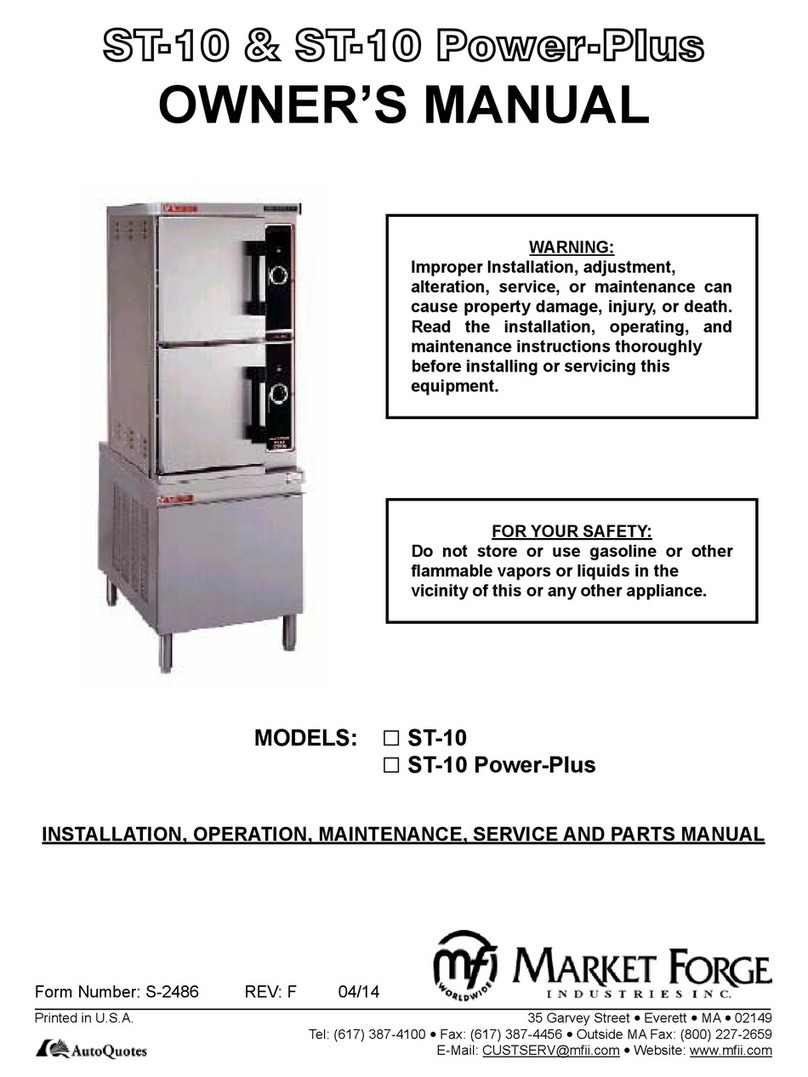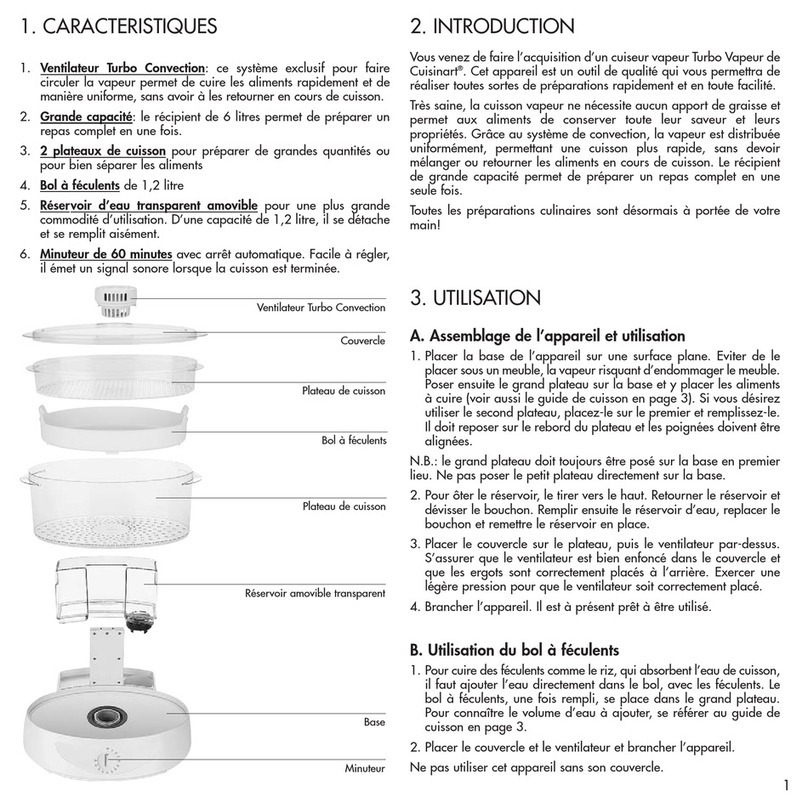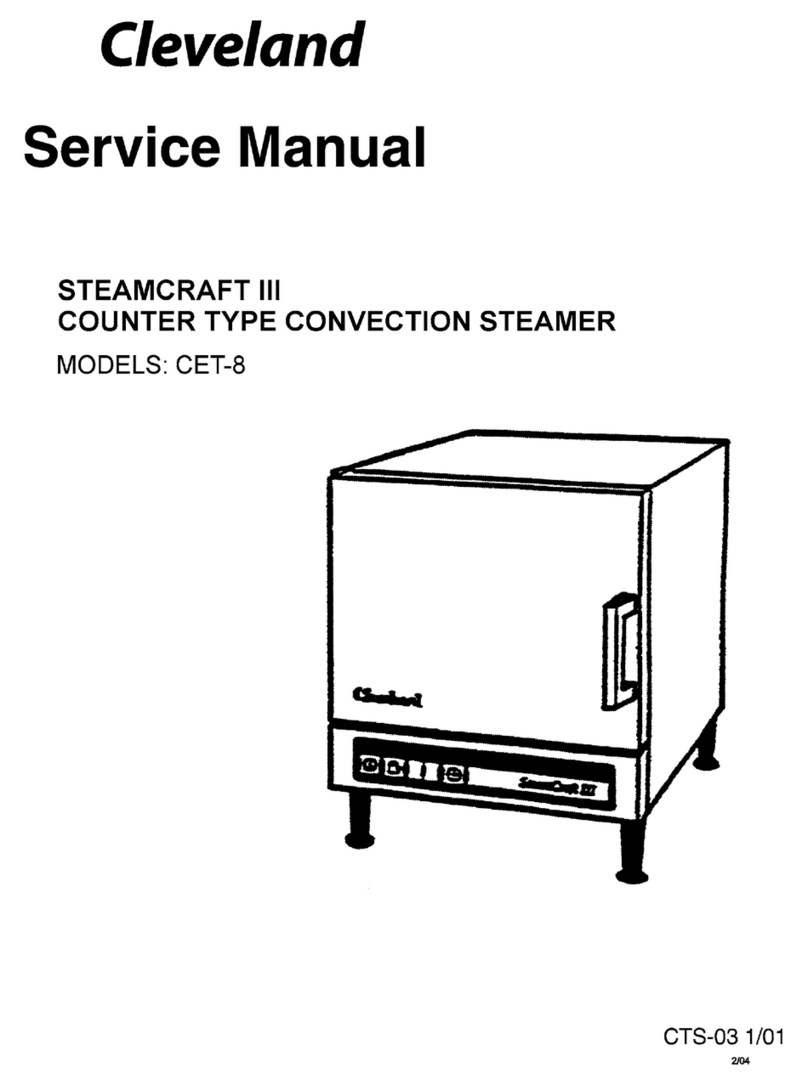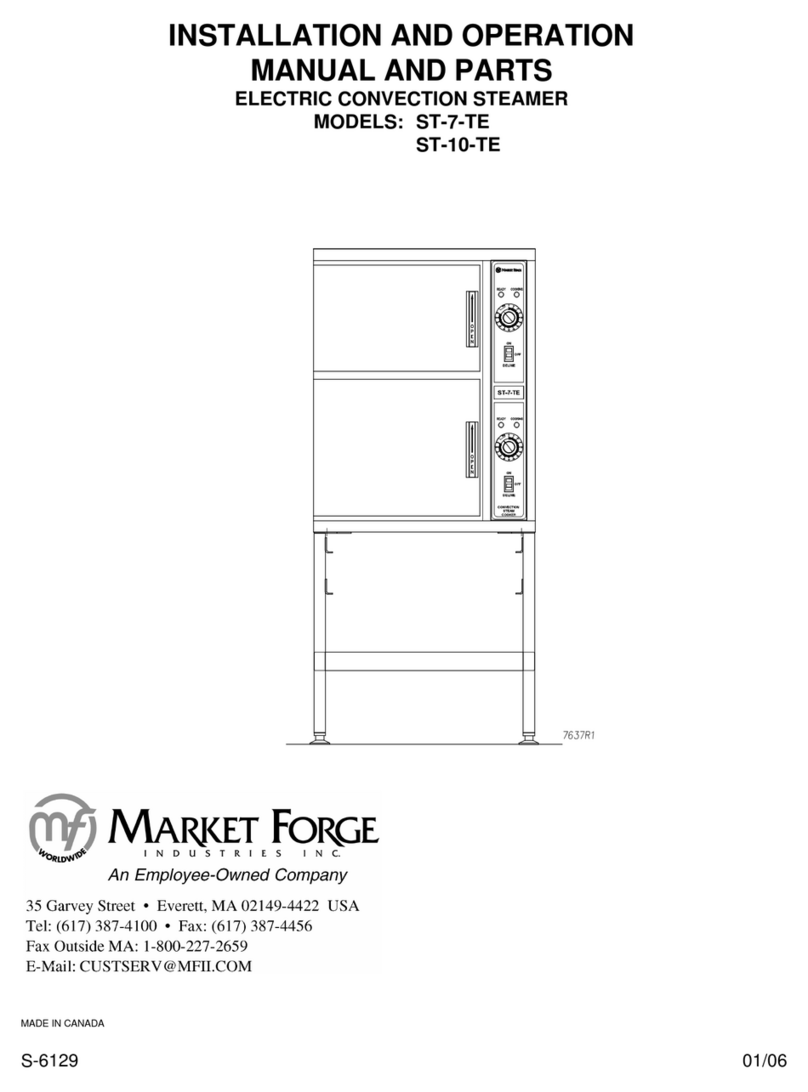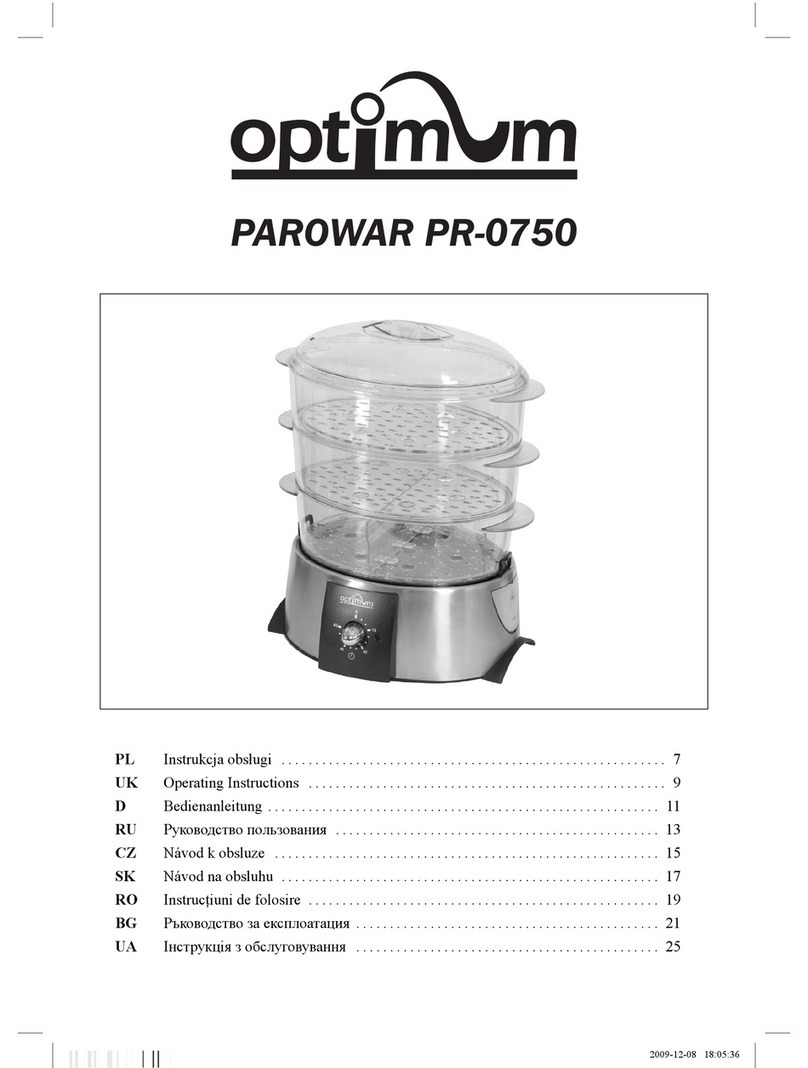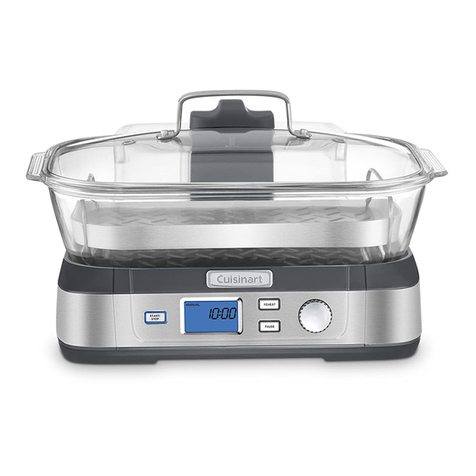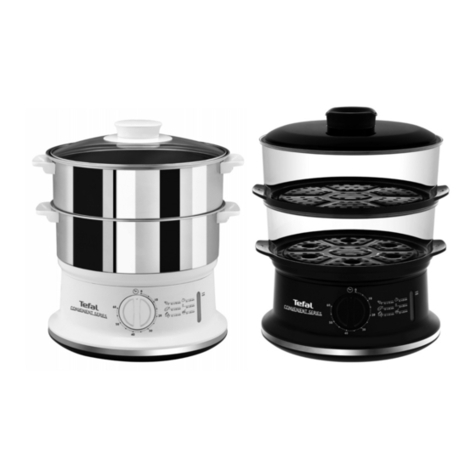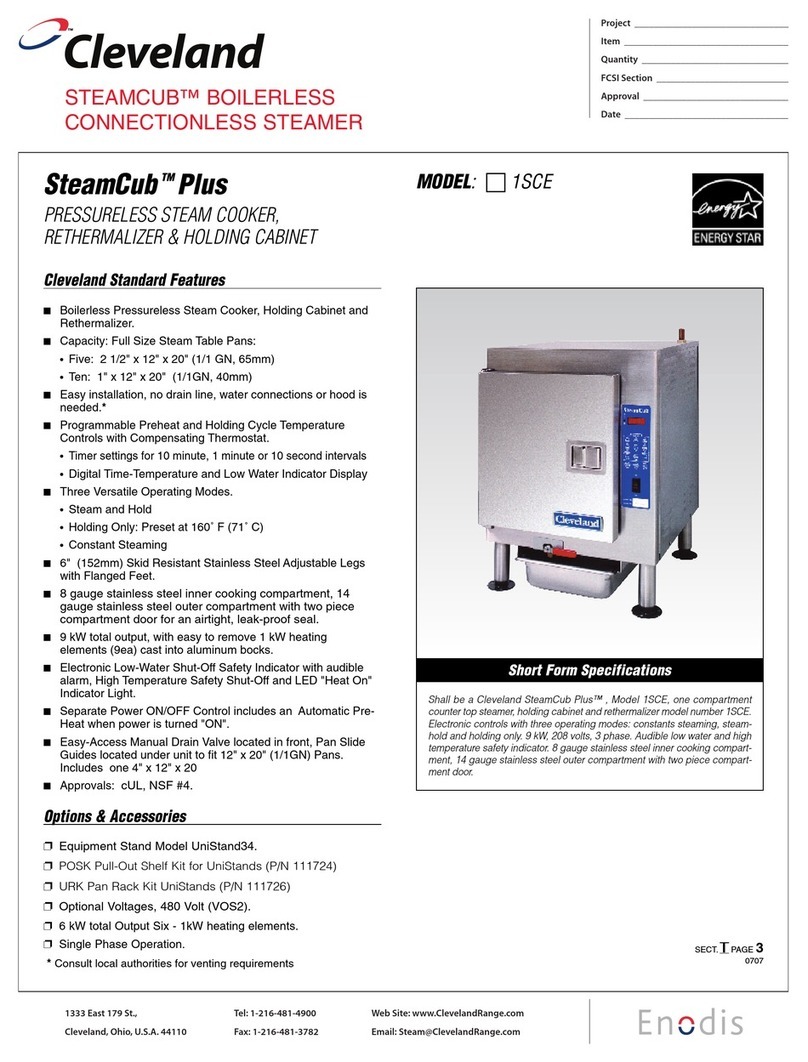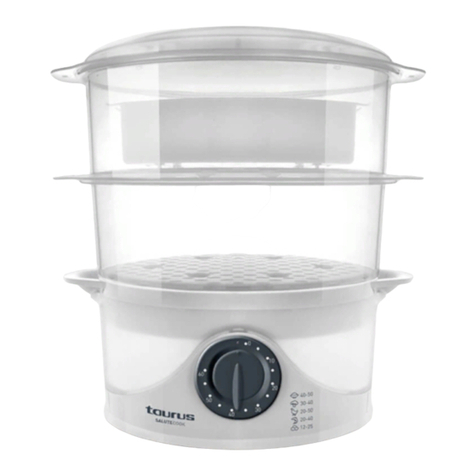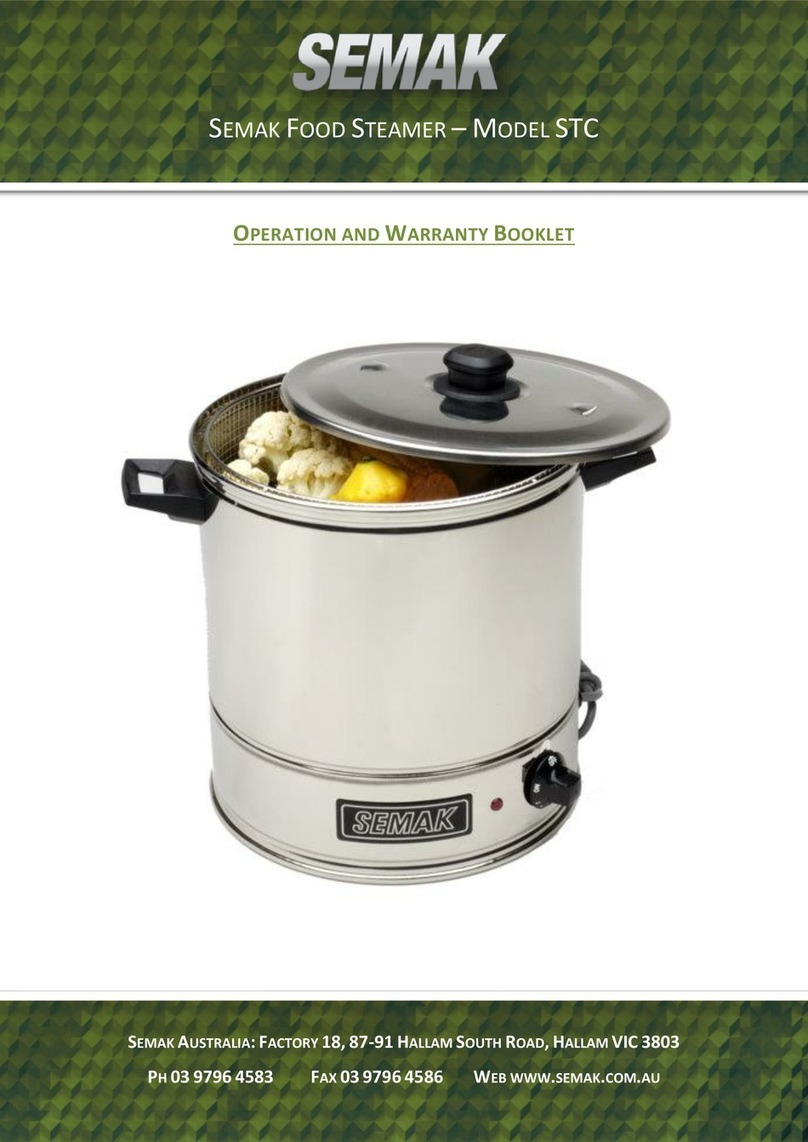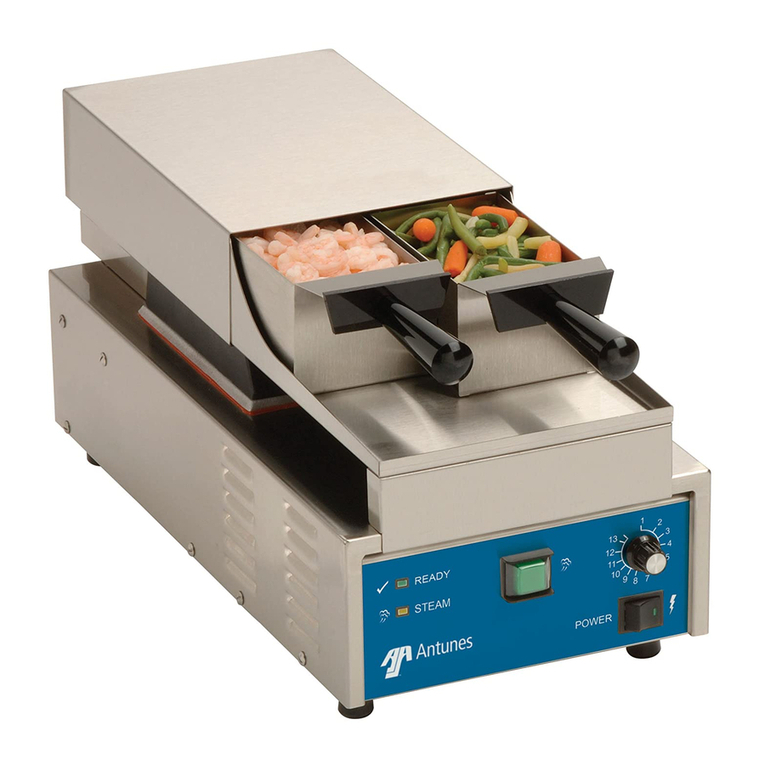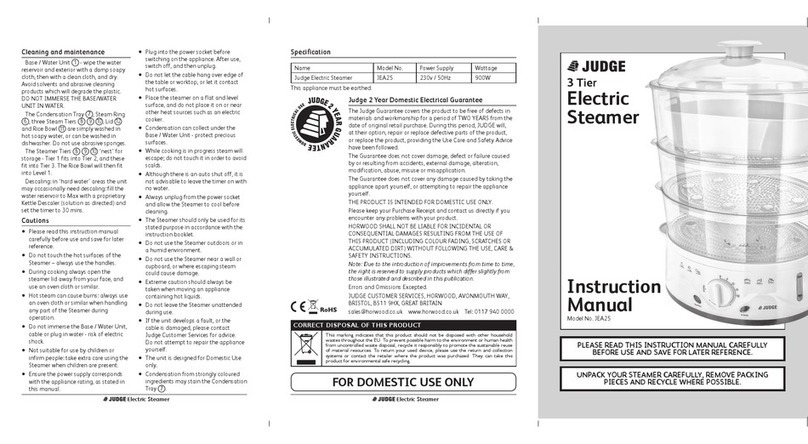
JUNE 12, 2017 4 TS-E ELECTRIC COUNTERTOP STEAMERS
TROUBLESHOOTING
Timer Motor
A defective timer motor will cause continuous operation in
the TIME mode, with the timer dial failing to return to the
“0 - Minute” position.
To conrm timer motor condition, proceed as follows:
1. Carefully check motor wire leads and tighten loose
connections.
WARNING
Use care while working with control panel.
Terminals carry 240 Volts.
2. Turn on power to the steamer.
3. Set timer dial (any setting beyond “0 - Minute”). If op-
eration is correct, the motor will turn the dial toward
“0 - Minute”. If the motor fails to operate, it is defective
and the timer must be replaced.
4. Shut off power to the cooker.
Door Interlock Switch:
Malfunction of the cooker door interlock switch prevents
timer indicator lights from turning on and steam generator
from operating when the timer dial is set. If steam does
not enter the compartment and the cooking indicator light
fails to turn on with the door latch securely engaged, the
fault may be in the door interlock switch.
Proceed as follows:
1. Turn off power to the cooker.
2. Disconnect wires to the door switch terminals.
3. Connect an ohmmeter between the terminals of the
switch. The switch is marked “C” for common, “NC”
for normally closed and “NO” for normally open.
4. Actuate the switch by closing the cooking compart-
ment door. If a zero reading cannot be obtained be-
tween the C and NO terminals, the switch is defective
and must be replaced.
5. Remove the ohmmeter and replace the leads on
switch terminals.
Indicator Lights
If the cooker compartment functions correctly, with the
single exception that the indicator light fails to light during
operation, the fault is a defective indicator light. A “burned
out” or defective light is veried by using an AC voltmeter
at the leads, with input power on the selector switch in the
correct position for that timer, the timer set, and the door
latches closed. If 240 volts is present, the fault is in the
indicator light and requires replacement. If 240 volts is not
present, the fault is in the wiring or control components
(selector switch, timer or door switch).
Buzzer
If the buzzer does not sound at the termination of the
operator-selected timer setting (timer dial returned to “0
- Minute” position), the fault may be a defective buzzer.
Buzzer operation is veried using an AC voltmeter at
buzzer coil connections with input power on and selec-
tor switch and coinciding timer dial set at the “0 - Minute”
position. If voltage is 240 volts, the fault is in the buzzer,
which must be replaced. If 240 volts is not present, the
fault is in the wiring or control components (timer or selec-
tor switch).
Wiring
WARNING
Disconnect the power supply to the appliance
before cleaning or servicing.
Using an ohmmeter, wiring continuity between the con-
nections shown on the wiring diagram is readily veried.
This is best done in stages, removing only those wires
required for each continuity check. As each lead is re-
placed, it should be checked for evidence of corrosion,
and cleaned if necessary. All leads must be tightly at-
tached so as to provide a good electrical connection.
Door Gasket
Check gasket for cuts and replace if necessary.
Door Gasket Replacement
The cooking compartment door gaskets are made of a
silicone-type rubber material that is very durable but sub-
ject to wear during normal operation. Should the gasket
leak replace it.
1. Open the cooking compartment door.
2. Remove the six or eight screws from the gasket plate
in the door panel assembly.
3. Remove the gasket plate and the door gasket from
door panel.
4. Install the new door gasket to the door panel. Replace
the gasket plate and six or eight screws.
5. Gasket replacement is now complete.
Door may be difcult to close until gasket has compressed
to conform to opening. Firmly slam the door, leaving door
closed several hours or overnight will compress gasket.












